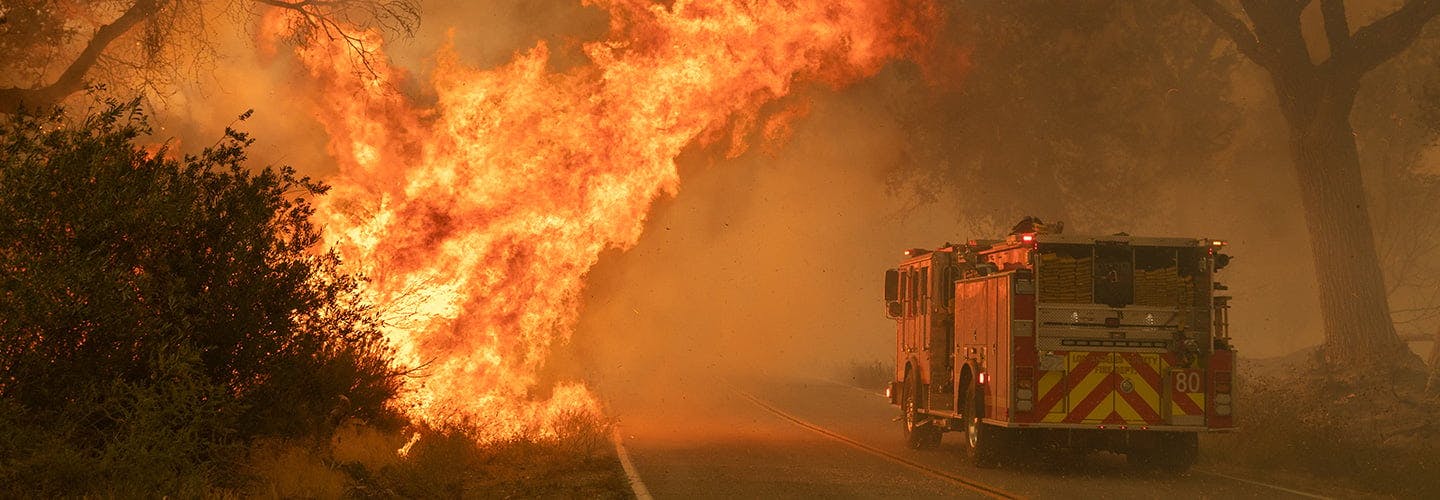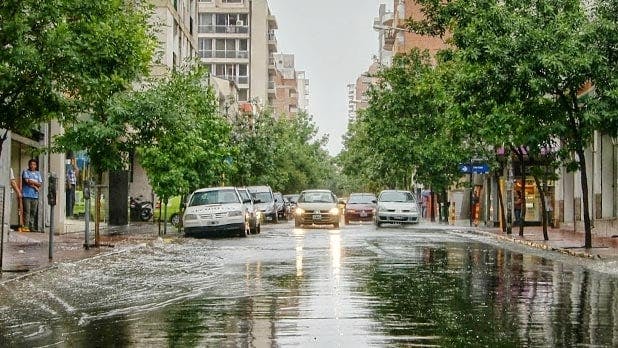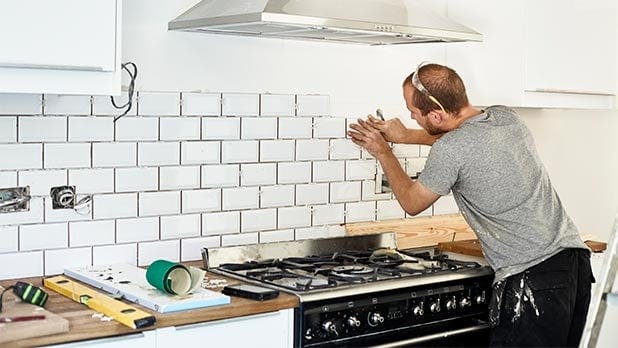Wildfire insurance resources + what you need to know
- Homeowners insurance
- Crisis management
- Planning ahead
- Wildfire
- VIU resources

According to the National Oceanic and Atmospheric Administration (NOAA), there were 58,733 wildfires in the U.S. in 2021. While that number sounds high, that’s actually low compared to the averages over the last 20 years.
Wildfires are unplanned, spread fast and are incredibly dangerous. With nearly 72 million U.S. homes at risk, everyone should know their area’s risk level and prepare in case one impacts their neighborhood.
The U.S. Environmental Protection Agency (EPA) says, “Wildfires increase air pollution in surrounding areas and can affect regional air quality. The effects of smoke from wildfires can range from eye and respiratory tract irritation to more serious disorders, including reduced lung function, bronchitis, exacerbation of asthma and heart failure, and premature death.” That means the danger exists even if you’re well away from the flames themselves so it’s important to have an emergency plan in place.
Reduce your personal risk while protecting your family
1. Learn about the dangers
Wildfires don’t often begin in heavily populated areas. This means that you may have some time to prepare your home ahead of evacuating to maximize its chances of survival. The National Fire Protection Association (NFPA) has put together resources about the Home Ignition Zone and what you can do to in each of the zones around your home to minimize fire damage as a wildfire gets closer.
These are best practices that can, and should, be done year-round to stay safe from any type of fire. Take special care during wildfire season to double check that you’re up to date on all of these steps.
In the immediate zone, up to 5 feet from your home, the NFPA suggests:
- Clean roofs and gutters
- Replace or repair loose shingles
- Install 1/8-inch metal mesh screening on exterior vents
- Repair or replace loose window screens
- Box in areas below patios and decks
- Move flammable material away from the exterior of the house (e.g. mulch, leaves, firewood)
To learn more about these steps, and what you can do as you get further from your home, check out the NFPA’s wildfire preparation page.
2. Check your insurance policy
While wildfire insurance doesn’t specifically exist, standard homeowners insurance policies typically cover damage from fire, including wildfires. However, if you live in a high-risk area your options for carriers may be limited and the policies available to you could exclude this damage unless you purchase additional coverages.
If you’re unsure about your policy, you can talk to a VIU by HUB Advisor to find out what your policy covers and what additional options may be available to you.
Carefully review your policy and check on these coverages that might cover damages caused by a wildfire insurance claim:
- Dwelling Coverage – this will cover the physical structure of a house as well as attached structures such as decks and garages.
- Other Structures Coverage – this is for detached structures like a shed or a fence.
- Personal Property Coverage – this covers the items inside a home like furniture and appliances.
- Loss of Use Coverage (Additional Living Expenses Coverage) – this will pay for a hotel while the house is unlivable, either because an evacuation was ordered by local authorities, or repairs are being done.
Remember that insurance coverage terms are always subject to the conditions of the policy, which include accurately reflecting your property in the policy application, payment of your premiums and timely notification of the claim to the insurer.
3. Plan for all possible outcomes
Wildfire safety comes in two forms: evacuating and staying in place. Pay attention to local news to learn which should be done for each neighborhood and for each fire. It’s important to follow the instructions of local authorities so that roads aren’t overwhelmed and people who need to evacuate will be able to do so.
Whether you’re evacuating or staying in place, there are some steps you can take to help safeguard your home. Keep a fire-resistant zone of 30 feet around your home that is free of leaves and debris. You can also plan your evacuation routes so you’re prepared if the authorities determine that you should leave your house.
It’s important to have two separate emergency kits for wildfire. One that can be used when remaining in place and one that can be used when evacuating. A kit for staying home should include supplies for a two-week period including:
- Water (a gallon per person, per day)
- Non-perishable food
- Radio (battery-powered or hand-crank)
- First aid kit
- Medication and medical equipment
- Multi-purpose tool
- Cash
Evacuating families should pack for three days. An evacuation may last longer, but a three-day supply is easy to carry and additional needs can be purchased. A good list to start with includes:
- Water (a gallon per person, per day)
- Non-perishable food that can be eaten without heat
- Medications and medical equipment
- Hygiene items
- Copies of personal documents
- Cell phone and chargers
- Cash
- Maps
Beyond these basics, consider the specific needs of family members. For example, extra bottles and pacifiers for babies or activities for children. The Red Cross has a great list of additional items to consider when planning for possible evacuation.
4. The danger isn’t over when you return
Continue to listen to local authorities for information about when it is safe to return home. Upon return, be cautious outside. There may still be ash, embers, smoldering debris and heat pockets that can cause burns or even ignite a new fire. Beyond the fire risk, there could be infrastructure damage such as fallen power lines.
Follow public health guidelines for cleaning homes and yards and always wear safety equipment. An N95 mask, long sleeves and long pants will go a long way toward keeping you safe from ash and smoke after a fire. Check food and water to be sure that it hasn’t been contaminated or gone bad before eating.
5. File insurance claims quickly and completely
When filing a post-wildfire insurance claim, be sure to photograph and document the damage. Compare the post-fire state of your belongings to a home inventory and submit the information to your insurance carrier. After photographing the damage, you can clean your home but don’t throw anything away until you’ve spoken to your insurance company. They may want the full items or samples for an inspector.
Understand what you’re covered for — and where you might need more protection
Your standard homeowners insurance will likely cover most wildfire damage. Talk to our advisory team to learn more about your specific circumstances and coverages. A wildfire can already cause substantial unexpected damage, don’t let it damage your pocketbook.


